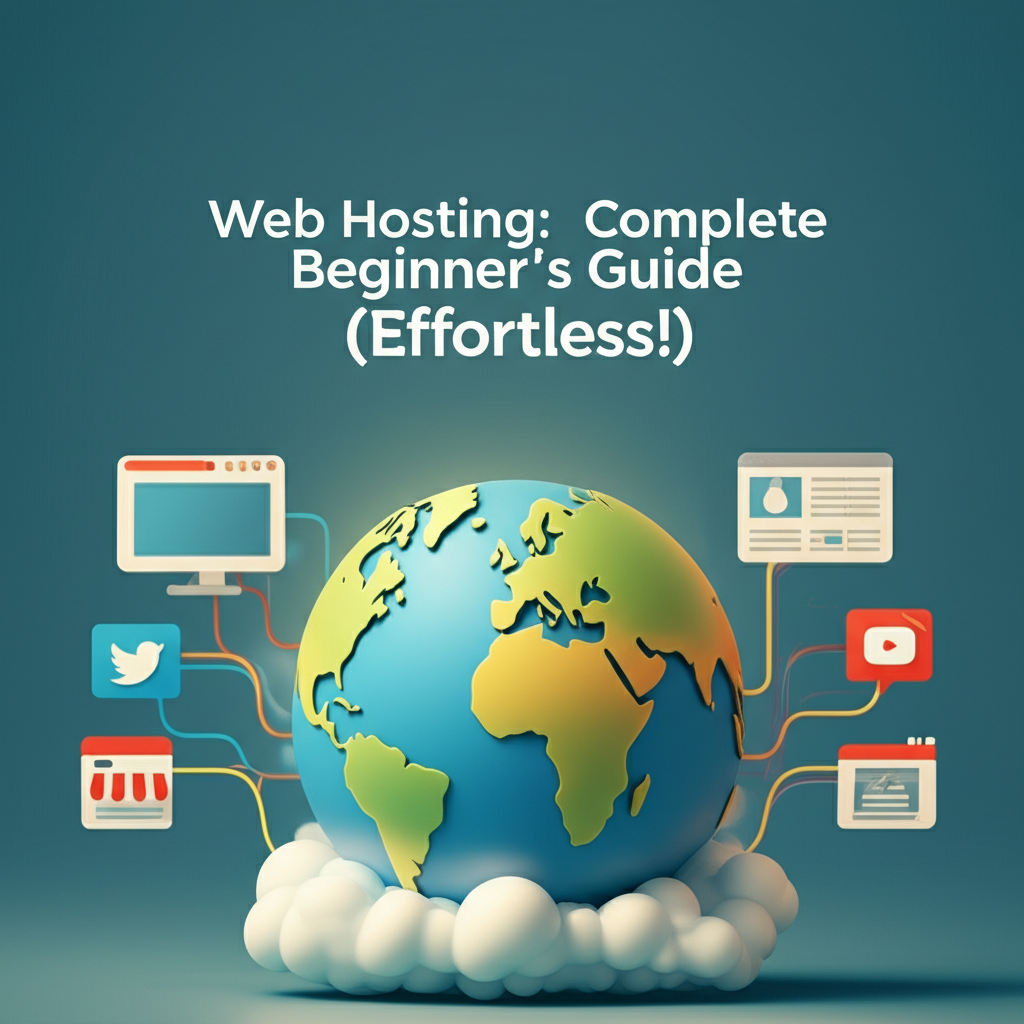- Understanding the Basics of Web Hosting
- Different Types of Web Hosting: Finding the Perfect Fit
- Choosing the Right Web Hosting Provider: Key Considerations
- Getting Started with Web Hosting: A Step-by-Step Guide
- Web Hosting: Empowering Your Online Presence
Web Hosting: A Complete Beginner’s Guide (Effortless!)
Web hosting is the foundation of any website. It’s essentially renting space on a server to store all your website’s files, making them accessible to anyone online. Without web hosting, your meticulously crafted website would remain invisible to the world. This comprehensive beginner’s guide will demystify the world of web hosting, explaining the core concepts in an easy-to-understand manner, ultimately helping you choose the right solution for your online endeavors.
Understanding the Basics of Web Hosting

Think of your website as a collection of files: images, text, videos, and code. These files need a place to live so that people can access them through the internet. That “place” is a server – a powerful computer that stays online 24/7. Web hosting providers own and maintain these servers, renting out space to individuals and businesses. When someone types your website address into their browser, their computer connects to this server, and the server sends the requested files to display your website.
Different Types of Web Hosting: Finding the Perfect Fit
Choosing the right type of hosting is crucial for your website’s performance and scalability. Here are the most common types:
Shared Hosting: This is the entry-level option, ideal for small websites and blogs. Imagine an apartment building – you share the server’s resources with other “tenants” (websites). It’s the most affordable option, but performance can be affected if another website on the same server experiences a traffic surge.
Virtual Private Server (VPS) Hosting: This offers a balance between affordability and performance. Envision a townhouse – you still share the building (server) but have your own dedicated space and resources. VPS hosting offers more control and better performance than shared hosting.
Dedicated Hosting: Imagine owning an entire building. With dedicated hosting, you rent an entire server exclusively for your website. This gives you maximum control, flexibility, and performance, but it comes at a higher price.
Cloud Hosting: Think of it as renting space in multiple buildings simultaneously. Cloud hosting distributes your website across several servers, providing redundancy and scalability. If one server fails, another seamlessly takes over. It also allows you to easily adjust your resources based on your website’s needs.
Managed WordPress Hosting: This type of hosting is specifically optimized for WordPress websites. The hosting provider takes care of all the technical aspects, such as updates, security, and performance optimization, allowing you to focus on creating content.
Choosing the Right Web Hosting Provider: Key Considerations
Choosing a web hosting provider is a significant decision. Here are some crucial factors to consider:
Uptime: This refers to the percentage of time your website is online. Aim for a provider that guarantees at least 99.9% uptime.
Customer Support: Reliable customer support is essential, especially when you encounter technical issues. Look for providers that offer 24/7 support via various channels (phone, email, live chat).
Pricing: While affordability is essential, don’t compromise on quality for the lowest price. Consider the features and resources offered in relation to the cost.
Storage Space: Choose a plan that offers enough storage for your website’s files, including images, videos, and databases.
Bandwidth: This refers to the amount of data that can be transferred between your server and visitors’ computers. Higher bandwidth is essential for websites with heavy traffic and large files.
Getting Started with Web Hosting: A Step-by-Step Guide
1. Choose a Domain Name: Your domain name is your website’s address (e.g., www.example.com). Select a name that is short, memorable, and relevant to your website’s content.
2. Select a Web Hosting Plan: Based on your website’s needs and budget, choose a hosting plan that suits your requirements.
3. Sign Up with a Web Hosting Provider: Create an account with your chosen provider and complete the registration process.
4. Point Your Domain to Your Hosting Server: This involves configuring your domain’s DNS settings to direct visitors to your website.
Web Hosting: Empowering Your Online Presence
Web hosting is the engine that powers your website, making it accessible to the world. By understanding the different types of hosting and choosing the right provider, you can lay a strong foundation for your online presence. This comprehensive guide has provided you with the necessary knowledge to navigate the world of web hosting with confidence. Remember to carefully consider your needs and research different providers before making a decision. With the right web hosting solution, you can confidently build and grow your online presence.











Leave a Reply